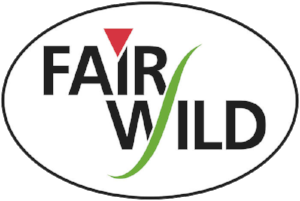Organic wild harvest operations may follow FairWild Standard to meet USDA NOP biodiversity conservation requirements
January 2016 – A new document published this month by the United States Department of Agriculture (USDA) National Organic Program (NOP) provides guidance on natural resources and biodiversity conservation for certified organic operations. The guidance document has particular relevance for certified organic wild collection operations due to the statutory requirements for sustainable resource management of organic wild habitat.
While not incorporated to the guidance by direct reference; the value of the FairWild Standard as a framework to guide the biodiversity conservation efforts of wild crop operations was positively acknowledged in USDA’s response to comments. The FairWild Standard provides comprehensive guidance both on conservation and sustainable use of the target wild plant resource, but also to prevent negative impacts of collection activities on other wild species, the collection area and neighbouring areas.
The latest USDA guidance document is part of a series of notifications issued to help certified organic operations comply with the NOP regulatory framework, as well as for accredited inspection and certification bodies to interpret the regulations uniformly.
The NOP was established by USDA in December 2000, and came into force by 2002. This was the first time that wild-collected medicinal and aromatic plants (MAPs), so-called ‘wild-crops’, could be considered for certified organic labeling and marketing in the United States. Included in the NOP regulations was the ‘Organic wild-crop harvesting practice standard’.
In July 2011, USDA published a guidance document entitled ‘Wild Crop Harvesting Guidance’ which was intended to clarify ways in which accredited certifying agents and certified operations can demonstrate compliance with the NOP wild-crop harvesting practice standard.
In December 2014, USDA NOP published a further draft guidance document for public comment titled ‘Natural Resources and Biodiversity Conservation for Certified Organic Operations’.
The FairWild Foundation (FWF) submitted comments (PDF) on the draft guidance in February 2015 illustrating the many ways that implementation of the FairWild Standard can help certified organic operations demonstrate compliance with the NOP wild-crop regulations, and recommending that USDA consider incorporating reference to the FairWild Standard as one example of best practice for biodiversity conservation in the context of sustainable management of wild collection areas under organic control.
USDA NOP Natural Resources and Biodiversity Conservation GuidanceIn January 2016, USDA NOP published its final guidance document titled ‘Natural Resources and Biodiversity Conservation Guidance’. While USDA decided not to incorporate the FWS by reference into its final guidance document, the agency did acknowledge the value of the additional guidance provided by FairWild in its ‘Response to Comments’ document, “Wild harvest operations may voluntarily elect to follow the FWF standards in order to meet the NOP requirements for biodiversity conservation.”
All USDA NOP guidance documents are compiled into a single handbook titled “National Organic Program Handbook: Guidance and Instructions for Accredited Certifying Agents and Certified Operations”, which is available online.
